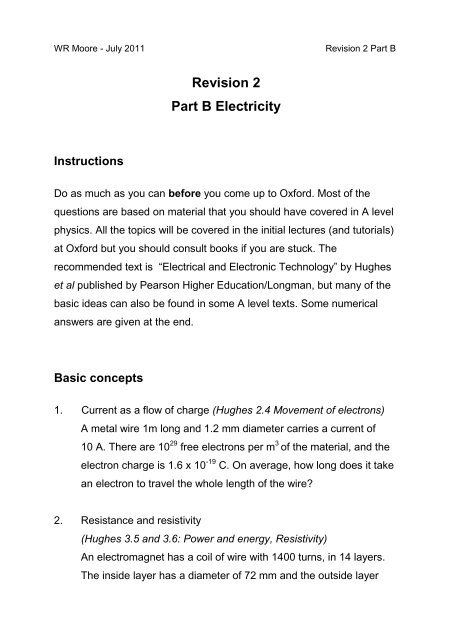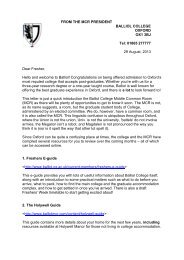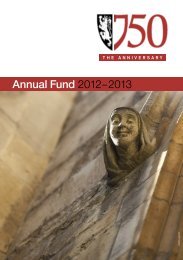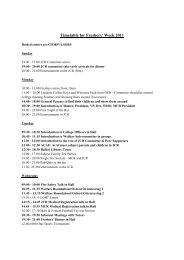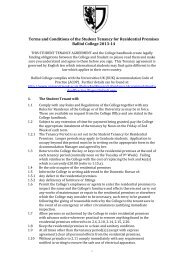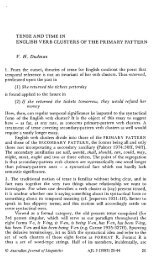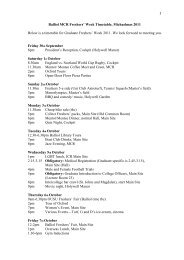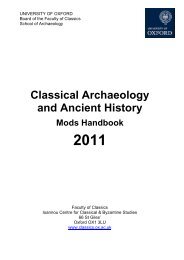x - Balliol College - University of Oxford
x - Balliol College - University of Oxford
x - Balliol College - University of Oxford
You also want an ePaper? Increase the reach of your titles
YUMPU automatically turns print PDFs into web optimized ePapers that Google loves.
WR Moore - July 2011<br />
Revision 2 Part B<br />
Revision 2<br />
Part B Electricity<br />
Instructions<br />
Do as much as you can before you come up to <strong>Oxford</strong>. Most <strong>of</strong> the<br />
questions are based on material that you should have covered in A level<br />
physics. All the topics will be covered in the initial lectures (and tutorials)<br />
at <strong>Oxford</strong> but you should consult books if you are stuck. The<br />
recommended text is “Electrical and Electronic Technology” by Hughes<br />
et al published by Pearson Higher Education/Longman, but many <strong>of</strong> the<br />
basic ideas can also be found in some A level texts. Some numerical<br />
answers are given at the end.<br />
Basic concepts<br />
1. Current as a flow <strong>of</strong> charge (Hughes 2.4 Movement <strong>of</strong> electrons)<br />
A metal wire 1m long and 1.2 mm diameter carries a current <strong>of</strong><br />
10 A. There are 10 29 free electrons per m 3 <strong>of</strong> the material, and the<br />
electron charge is 1.6 x 10 -19 C. On average, how long does it take<br />
an electron to travel the whole length <strong>of</strong> the wire<br />
2. Resistance and resistivity<br />
(Hughes 3.5 and 3.6: Power and energy, Resistivity)<br />
An electromagnet has a coil <strong>of</strong> wire with 1400 turns, in 14 layers.<br />
The inside layer has a diameter <strong>of</strong> 72 mm and the outside layer


